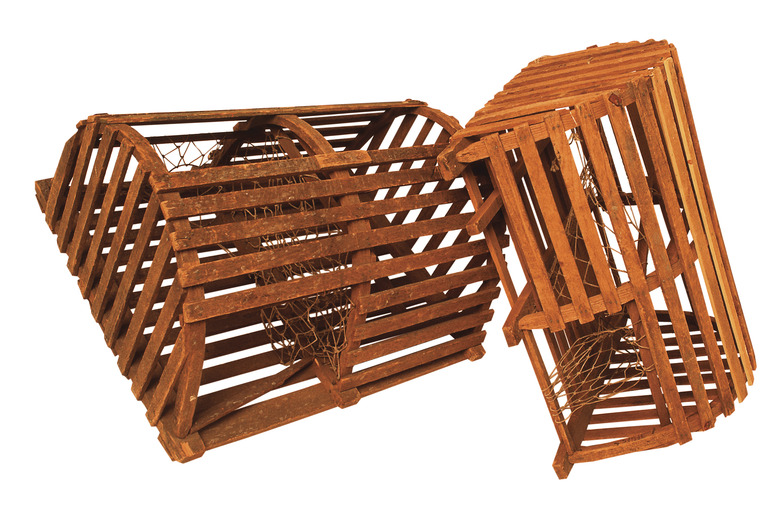DIY Lobster Traps
Even with the recent tumble in lobster prices, lobstering is a traditional way of life for many families along the Maine coast, Newfoundland and Nova Scotia. To make a living catching lobster in this area requires a good boat, resistance to cold weather and plenty of traps. Though various designs exist, anyone can build a simple, effective lobster trap out of nothing but wooden slats, wire and a little bit of mesh. To be sure, there are more complex designs out there, but simple works well for beginners.
Materials
The lobster trap you're going to build will resemble a half cylinder when complete–flat bottom, covered with spaced wooden slats and sturdy nylon mesh covering each end. For wooden slats, choose about two dozen that are two feet long, two inches wide, and ¼ to ½ inch thick. You'll also need two slighter thicker slats, about an inch thick. The half hoops at either end of the trap will be constructed of a cut sapling 1-2 inches in diameter and three feet long. You'll also need 4-6 square feet of a sturdy nylon mesh.
Construction
Steam your saplings for a few hours, long enough that they become pliable and easy to bend. Form them into a half circle shape–an easy way to do this is find a curved surface of appropriate size, maybe an old tire wheel, and tie the sapling to it until it holds the shape. Take one of the thicker slats, cut it to fit and nail one end of the bent sapling to each end. Repeat this process with the other sapling and thicker slat. Space these half hoops, flat sides down, far enough that the thinner slats can be nailed to them. Begin by nailing the first slat to the top center. Now drop down to where the half hoop touches the work surface and nail a slat on each side. You now have the basic frame of your lobster trap.
Finishing
Cover the entire half hoop and flat bottom with wooden slats, parallel to the three you've already done and leaving a one inch space between them. Don't cover the ends of the trap with slats–just the sides. Cut to fit enough nylon mesh to cover each end. Cut a small hole in the middle of each piece of mesh, just large enough for a lobster to squeeze through. Thread wire around the perimeter of the hole to make it hold its shape. Attach the mesh pieces to each end of the trap. Small nails will suffice. Now you have a functioning lobster trap. Bait goes into the center. Lobsters crawl through the mesh opening and can't get back out (hopefully). All that's left is to build a simple door to reach in and get the lobsters after you retrieve the trap. Any simple design will do. It's basically nothing more than a movable flap or panel with clasps. Strips of old rubber work well for hinges. That's it. Go catch 'em! For a visual representation of the method described, the video link to the Lobster Cove Lighthouse in Newfoundland should answer any further questions.
References
Cite This Article
MLA
Dowell, Derek. "DIY Lobster Traps" sciencing.com, https://www.sciencing.com/diy-lobster-traps-5776553/. 24 April 2017.
APA
Dowell, Derek. (2017, April 24). DIY Lobster Traps. sciencing.com. Retrieved from https://www.sciencing.com/diy-lobster-traps-5776553/
Chicago
Dowell, Derek. DIY Lobster Traps last modified March 24, 2022. https://www.sciencing.com/diy-lobster-traps-5776553/
